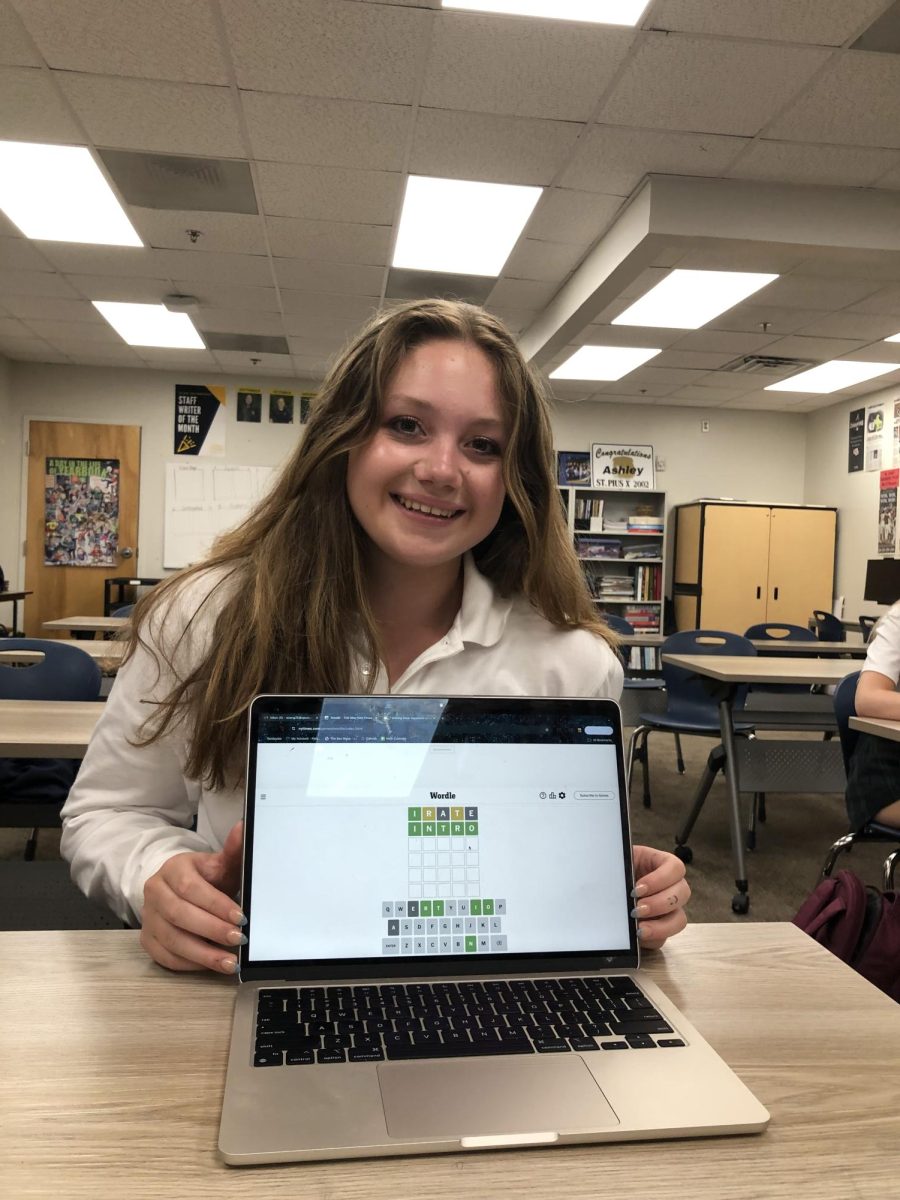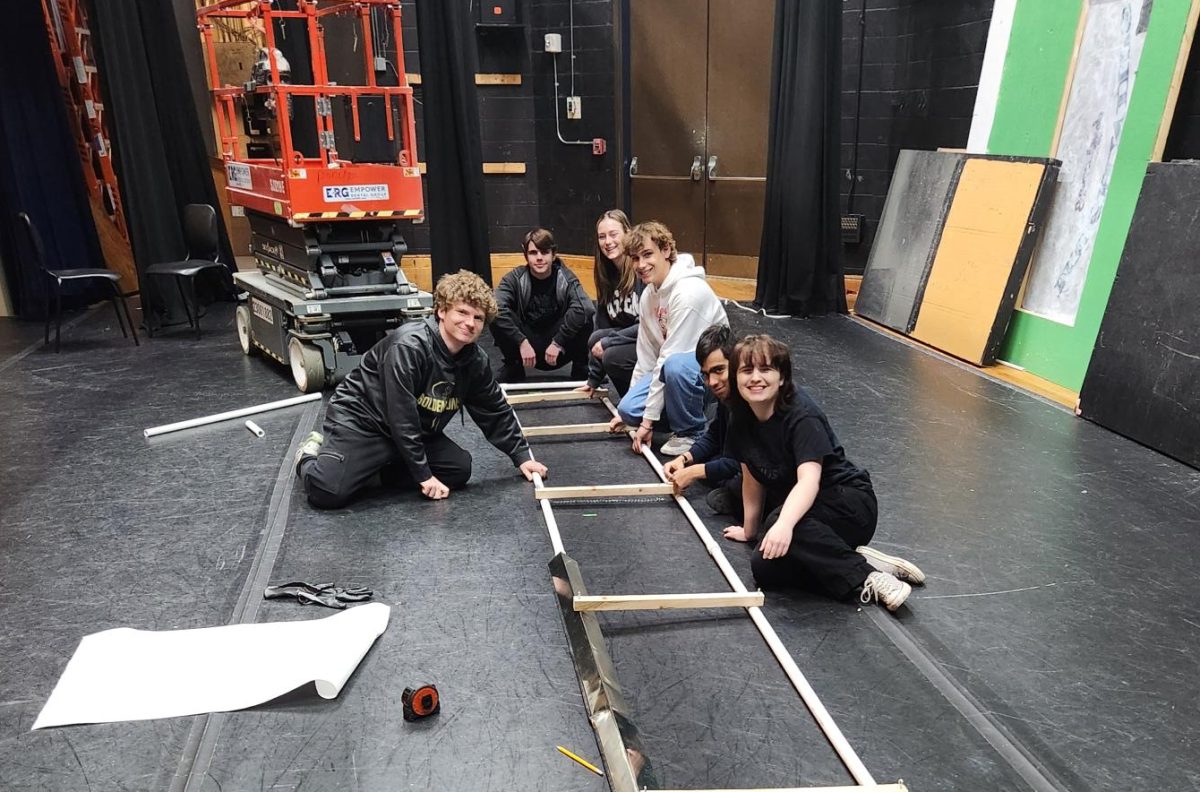Despite declining interest in newspapers, one publication has been able to capture, not readers, but millions of eager players – New York Time game players, that is.
In October of 2021, the New York Times took the world by storm with the release of its first and most popular game, Wordle. After its release, the average daily viewership of the New York Time’s website jumped from 90 to 300,000 people each day, and soon enough the publication would be boasting 3 million regular players. Although the game was released nearly three years ago, the New York Times has maintained, if not expanded, its impact with the launch of eight other games.
However, Wordle remains a favorite both globally and locally, as St. Pius X students all agree that the Wordle is their favorite game. Senior Jackye Jiotsop even went as far to say, “the Wordle is the best thing that’s happened since the Pandemic.”
“It’s so fun guessing the words and trying to logic it out. I think it’s a really great way to start the day!” Jiotsop said.
While this beloved game may be familiar, it always poses a challenge for its players – some of which can cause controversy. Such was the 1010th Wordle when the winning word was sally. Sally, a noun meaning “a sudden charge out of a besieged place against the enemy,” caused a public outcry as players flocked to social media to file their complaints.
One X (formerly known as Twitter) user said, “I felt betrayed.” Another one chimed in saying, “sally is not a word, this is crazy.”
The shockwaves “sally” sent through the Wordle community were even felt here at St. Pius. Senior Sabrina Harrington described it as the “Weirdest Wordle word ever.”
“I had never even heard of it before. I had to go look it up – after I lost the game,” Harrington laughed.
One lucky senior, though, Regan Hoback, guessed the obscure word on her third try, and “sally” proved to be a chance to demonstrate her Wordle prowess.
“I just put it in to try. I thought it was a proper noun, but to my shock it worked! It was crazy, I had never gotten one so quick before,” Hoback said.
Although sometimes the puzzle can be difficult to solve, many people have a go-to-word they always play first. Depending on who you ask, the word used can vary greatly.
For example, seniors Dominic Noel uses the word “black,” Ava Ryback “freak,” and Alfredo Cortes the Franglais word “Adieu.”
While Wordle is indisputably the most popular New York Times game, Connections takes a close second place. When playing Connections, players are tasked with grouping 16 words into 4 groups of 4, but the grouping can be difficult to place.
“I hated the one that had colors spelt backwards. It was too hard to read,” said senior Leah Rogoski.
“One time there was one about butts. That one was so dumb,” said Ryback.
Another popular game is the Mini Crossword, the smaller cousin of the New York Time’s iconic Sunday crossword puzzle. The Mini Crossword operates like any other crossword puzzle, but with fewer squares, and it times you as you puzzle away.
Math teacher Ms Rebecca Entrekin said her record was 45 seconds.
“I think I just knew all the answers that day and it was just like boom, boom, boom,” Ms. Entrekin said.
On the flipside, Cortes recalled the time it took him the longest, “I think my record is like one hour,” he said.
Although many of the games are adored, players often have a fervent hatred for those they dislike: Tiles, Sudoku, Letter Board, and Spelling Bee, often landing themselves on that list.
“My least favorite has to be Spelling Bee or Letter Box – I hate Letter Box, I don’t understand it!” said Rose McGhan.
On top of the distraction the New York Time games provide students during their least favorite class, students and teachers both agree that playing these games have sharpened their intellect like Ms. Entrekin who believes it “Keeps her [my] brain sharp. I’ve learned some new words too.”
Rogowski added, “My Sudoku skills are definitely better.”
And for some, the New York Time games have also improved players’ confidence.
“It’s definitely an ego booster. I feel so smart when I get it right!” said Ryback. The games have sparked both enthusiasm and friendly competition, for students and teachers alike here at St. Pius. And in a world where the future of print journalism is uncertain, The New York Times games serve as a testament to the enduring power of innovation in capturing and retaining audience engagement.







